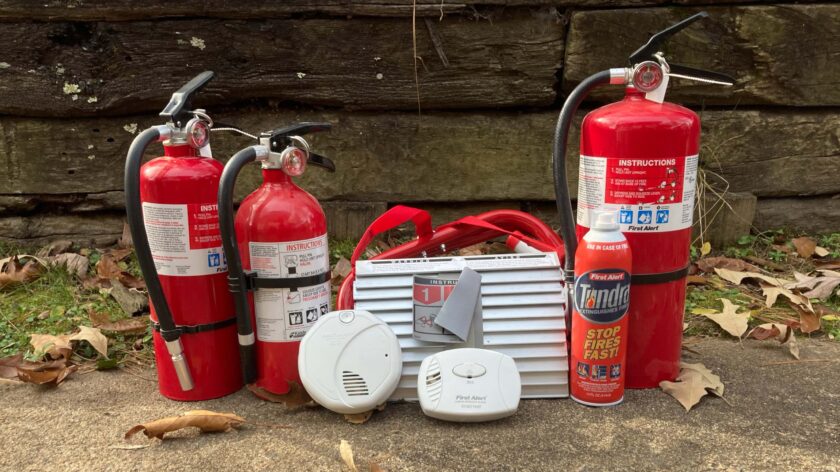Most people reading this blog have spent thousands of dollars on guns, ammo, holsters, and training. I’m betting most of you would balk at the idea of spending a few hundred bucks on fire prevention stuff. Fire will kill you and your family just as dead as a mass shooter…and is a much more likely threat. How much energy and attention have you put into fire emergency preparedness?
This article contains affiliate links.
Risk Estimation
In my opinion fire emergency preparedness information is sorely overlooked in preparedness literature. It’s hard to find much of anything about it, other than a casual mention that you might need a fire extinguisher. Today I’ll do my part to try to bring attention to this topic. It’s incredibly important because it impacts us even during “normal” times. Fire is an ever-present danger. Unfortunately it gets overlooked compared to more exciting threats like gunmen and knife-wielding maniacs.
A couple years ago I realized that I could 45 minutes explaining my choice of carry pistol, its caliber, why it’s better than other pistols, my preferred defensive ammo in detail, gun cleaning regimen down to the best solvents and lubricants, etc. I was (and am) also probably happy to smack-talk the guy that bought a pistol, loaded it up, and threw it in a Uncle Mike’s holster and considers himself armed…yet I was comfortable doing the equivalent when it comes to my own fire protection. Why? And how many of you are the same way when it comes to fire emergency preparedness?
Fire is deadly and devastating. It is a constant threat, and we underestimate it at our own peril. Though house fires have become less common, they haven’t been eradicated. And in any sort of extended grid-down – especially in winter – fires will likely become much more common. You owe it to your family to cover this base just as well as you’re covering your “human threat” bases.
Maybe you will learn a little bit from this article. My true hope is that it spurs you to action, and gets you thinking – and ACTING – on improving your fire emergency preparedness.
Home Fire Emergency Preparedness
As I wrote a few weeks ago, winter is coming. Winter means that people are firing up the heaters. From electric baseboard heat to gas furnaces to wood stoves, all present some increased fire danger. Even in the best of times winter generally equates to increased fire risk. During a grid-down emergency this risk becomes even greater.
As standard heat-sources like furnaces and heat pumps are rendered unusable, people resort to all kinds of creative ways to heat their homes. Most of you reading this have probably already invested in a safe, efficient grid-independent heat source like a high quality kerosene heater. While these tools are relatively safe, they still present higher fire risk than your standard furnace. Additionally, in grid-down situations you will also likely be cooking with riskier, alternative survival cooking tools.
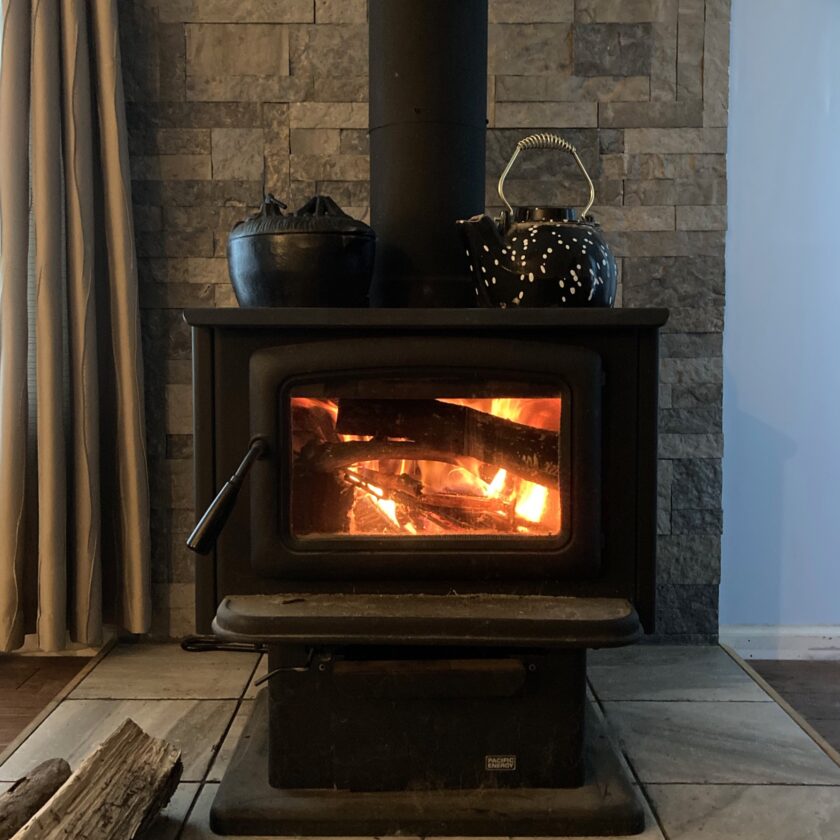
Compounding matters, emergency resources are stretched thin during a disaster. If a fire does occur in your home, the fire department might not be right there to rescue you. I know this first hand, having personally responded to a large, local disaster. A fire during a disaster can mean the lost of your shelter, safety, and all your supplies. You need to be prepared to be your own fire department.
There are four strategies to to fire protection preparedness: prevention, detection, suppression, and egress.
Fire Prevention
Prevention should be your number one strategy. The easiest fire to put out is the one that never starts. Work really hard to understand prevention and implement prevention strategies. There are many fire prevention strategies, but here I will focus on those pertaining to emergency heat sources. For more information check out this article.
Ensure your heat sources are properly cleaned, adjusted, and functioning correctly. Understand how auxiliary heat sources work before relying on them. Read the manual and practice with them in the safety of the outdoors before putting them in your home. Understand what creates hazards, and what signs of hazards are (i.e. yellow flames on a kerosene heater).
Have your chimney cleaned and inspected annually. Creosote build-up and bird/animal nests in chimneys create a huge fire hazard. Obstructed chimneys also promote poor air flow, rendering wood heat smoky and inefficient. Keep flammable items away from heat sources. Sometimes there is a temptation to dry wet clothing or warm a blanket, but NEVER put clothing or other flammables on top of a heater. Don’t set heaters onto flammable surfaces like carpet. Be extremely cautious about storing flammable items (like fuel) near heaters.
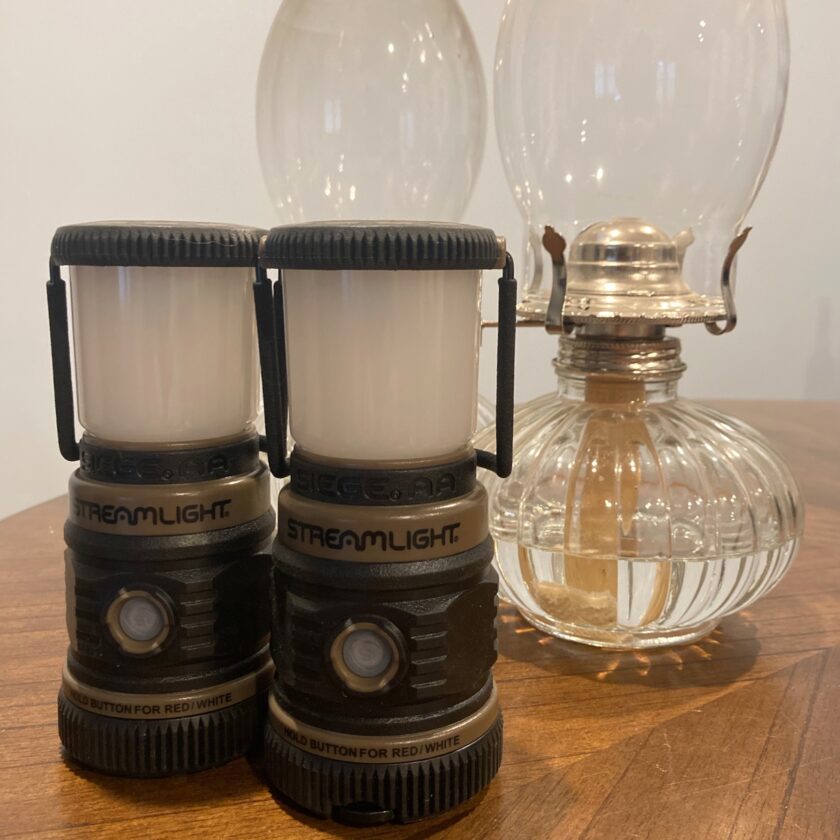
Prefer battery-operated light sources over oil lamps and candles. I get it; we have a ton of oil lamps and oil, too. These are backups to the backups, however. Where possible we prefer to rely on safer, battery-operated light sources.
Detection
If prevention is the first strategy against fire, detection is the second. You want to know about a fire quickly. Time equals ability to react, and the more time the better. The main detection tool is the smoke alarm. Having enough, working smoke alarms is a critical piece of home fire emergency preparedness. You should have a smoke alarm in each bedroom, each common space, and in basements and garages.
Smoke alarms come in several flavors. They are generally grouped according to how they detect fire, and how they are powered.
Battery vs. Wired Smoke Alarms
Let’s address power first. Smoke alarms may be either battery-operated or wired. There are some big, big advantages to both. With wired smoke alarms you really don’t have to worry about power too much. There is a 9V battery in these alarms, but it serves only as a backup, should power be lost. Otherwise the alarm is powered off of your house’s electricity. You can install wired alarms and pretty much forget about them. It’s pretty likely that your home came with some of these built-in. These are great because they last forever and you don’t have to think about them too much. Another huge benefit is that wired smoke alarms can be wired together, so if one goes off, they all go off.
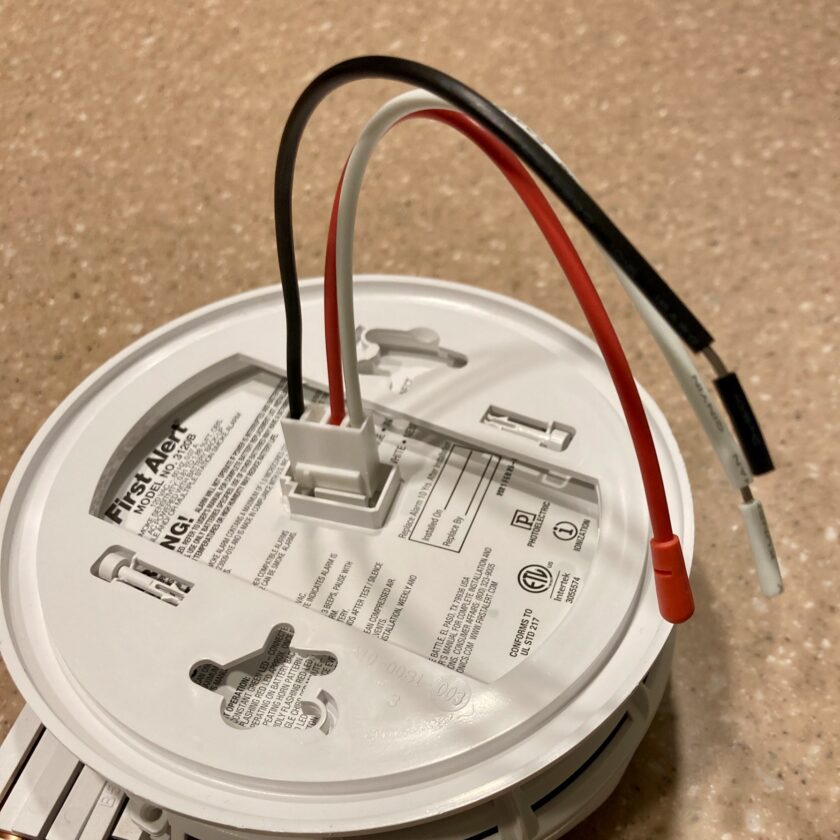
Smoke alarms can also be battery-powered. Battery-powered smoke alarms generally have a sealed, lithium battery that is good for an advertised ten years. These don’t require any external power-source at all, but when the battery goes out you have to replace the whole unit. You have to remember to replace these in a timely manner, but they are good to have for the times when power might be out for an extended period. Again, there are pros and cons to both.
Photoelectric vs Ionization Smoke Alarms
The other way smoke alarms are different is in how the sense fire. There are two types of smoke alarms: photoelectric and ionization. Photoelectric smoke alarm are better at detecting smoke from smoldering fires. Ionization-type detectors are better at detecting flaming fires. For a deeper explanation of how that works check out this article. Smoke alarms are marked with either a “P” or an “i” to denote photoelectric or ionization. You should check your home’s smoke alarms and see what kind you have.
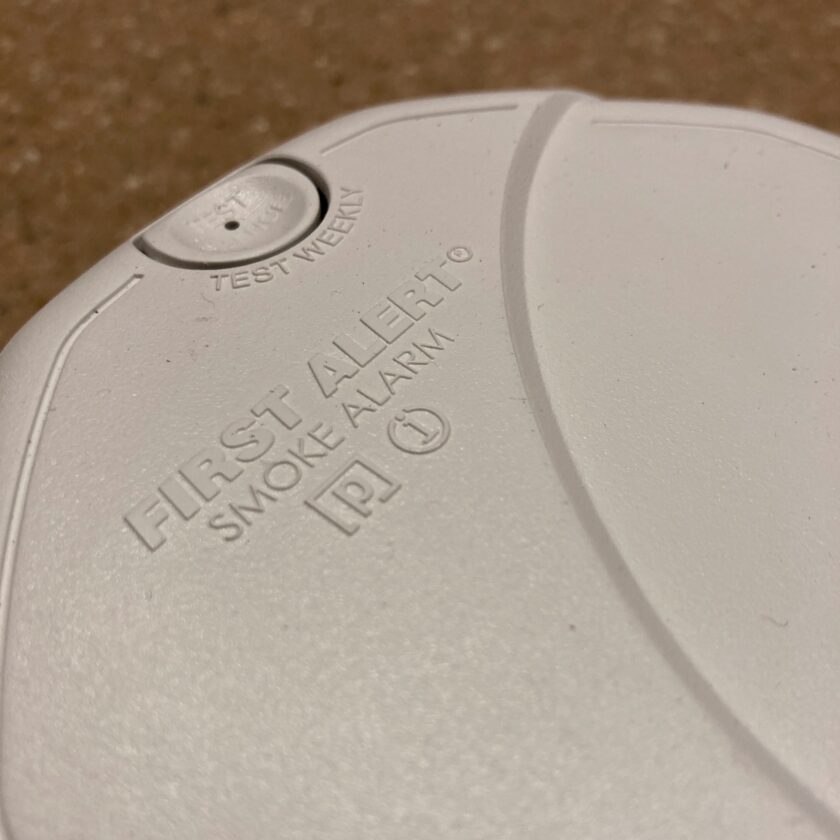
Personally, I prefer a smoke alarm that is able to sense either type of fire equally well. Most smoke alarms are one-or-the-other, but you can find “dual sensor” smoke/fire alarms. I am currently in the process of slowly upgrading my smoke alarms to dual-technology models.
My recommendation is this model. It is a dual-sensor alarm and is available as a wired or 10-year battery model. It is the one seen in photos here.
Carbon Monoxide Detectors
While we’re at it, we should mention carbon monoxide detectors. Carbon monoxide (CO) is the byproduct of incomplete combustion of fuel. It is odorless, colorless, and tasteless, meaning you have no idea if it is present in your environment. And it is incredibly deadly because it displaces oxygen on the hemoglobin in your blood. Carbon monoxide attaches 250x more readily to hemoglobin than oxygen does. A good carbon monoxide detector is cheap insurance.
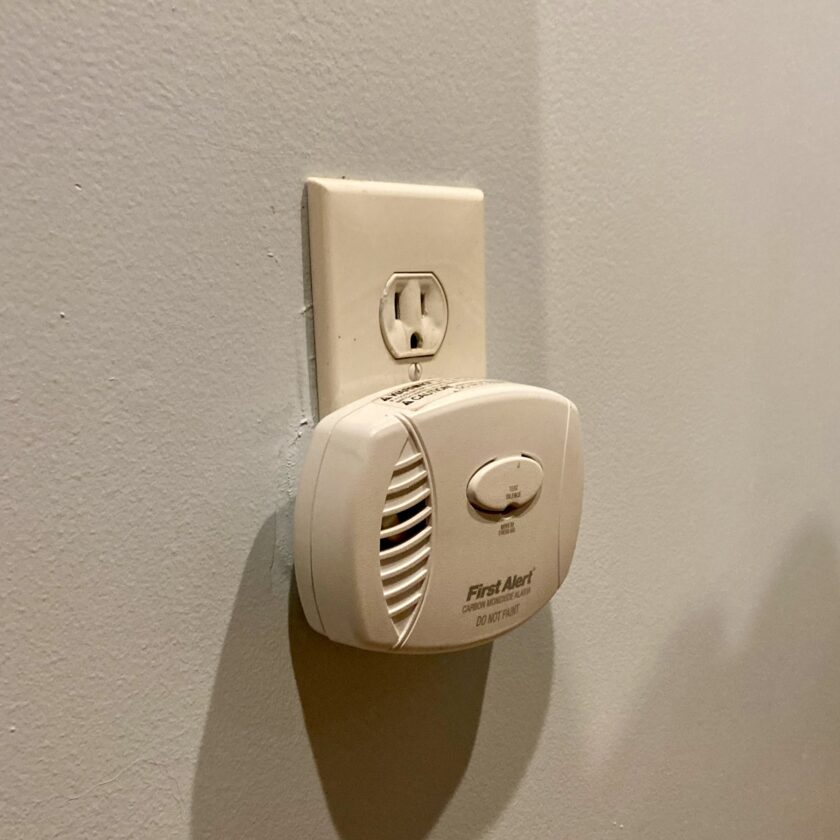
Placement of your CO detector isn’t terribly important – CO isn’t heavier or lighter than air, so you can place your detector low or high and it will still do its job. Some smoke detectors also detect carbon monoxide. Personally, I prefer a standalone unit so I can make sure my smoke alarms are dual-sensing, Photoelectric/Ionization units. If you have independent heat sources in multiple spaces, you need a CO detector for each space.
Maintaining Detection Devices
There is some maintenance requires for most detection devices. You should test your smoke alarms weekly. This involves nothing more than pressing the “test” button and enduring a few seconds of the alarm going off. This is a small price to pay to ensure your smoke alarm is working.
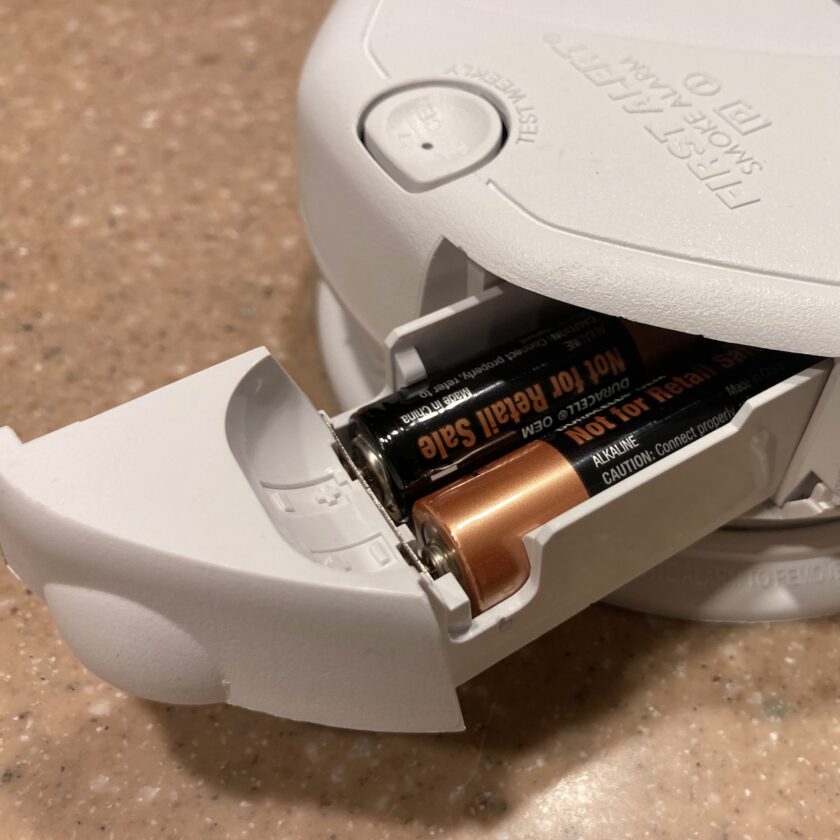
For regular, wired smoke detectors you should replace the backup batteries. The standard recommendation is to replace batteries ever six months, and I don’t disagree with this. For decades smoke detectors came with a 9V battery backup. I have found that newer smoke alarms take AAs. This greatly preferable as AAs are cheaper and most of you probably stock them anyway. And once you pull those old batteries out of the smoke alarm, you can always use them in a flashlight.
Suppression
Having early warning of a fire gives you the ability to do one of the following: attempt to suppress the fire or egress the home. Getting out quickly is the priority. However attempting to suppress the fire is not a bad idea if it looks feasible. We aren’t all going to let our house burn down because of a grease fire on the stove, right? A note of caution here, however: never let the fire cut off your exit. If the fire gets too big to handle, egress should be your top priority. Never forget: life before property!
Fire Extinguisher Classifications
The main suppression tool is the fire extinguisher. As I’m sure most of you know, fire extinguishers are rated by the type of fire they suppress. Let’s look at the three most common categories.
- A: combustible solids other than metal (wood, paper, etc.)
- B: Liquids, like gasoline and oil
- C: Electrical fires
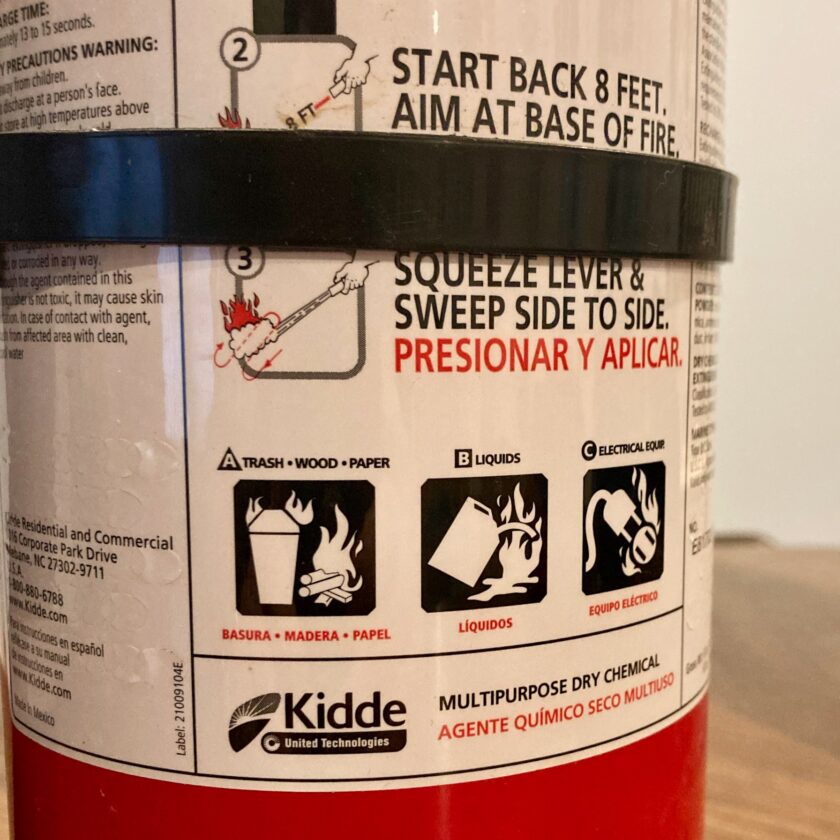
The fires described by these three ratings are all types of fires that are feasible to encounter in your home. That makes the selection of a fire extinguisher real easy: get an ABC-rated model. Once you’ve decided on type the next questions are “how big” and “how many?”
Quantity and Placement
Home fire extinguishers tend to put a premium on small size rather than fire-fighting capability. It is probably a good idea to upgrade your fire extinguishers, at least a little bit. I recommend a 5-lb fire extinguisher in the kitchen, near each heat source, and in each bedroom. Since most house fires occur in the kitchen you should have one in the kitchen. Since the kitchen is so high-risk we want options. We keep two extinguishers within reach of the stove: a small, aerosol extinguisher for small stovetop fires, and a larger, 6-lb, ABC unit under the sink.
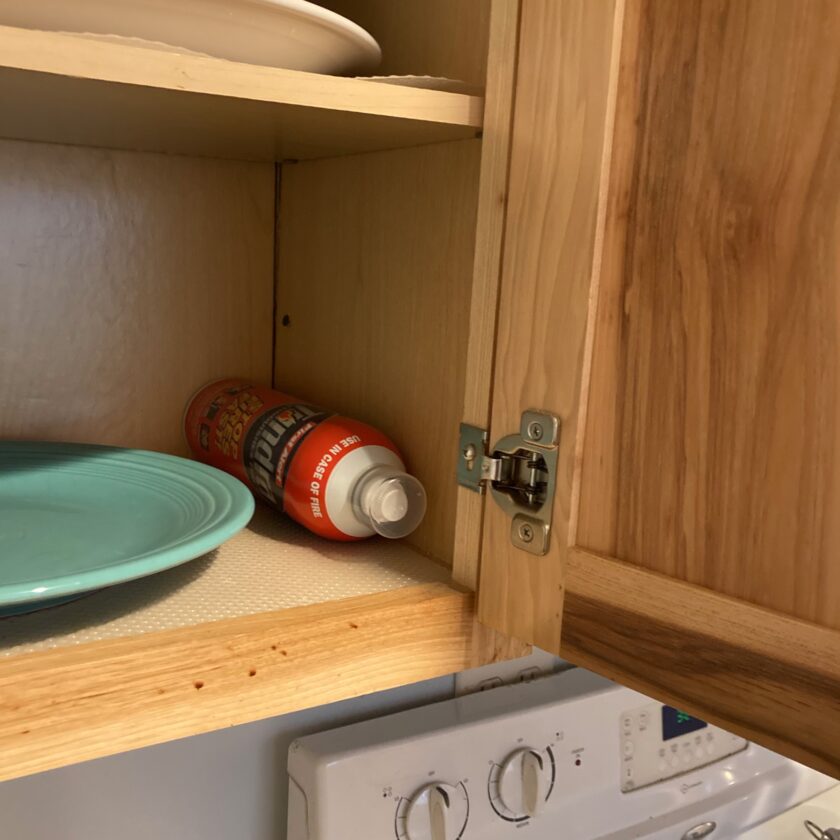
If you are running any sort of auxiliary heat you should keep a fire extinguisher nearby, but not too close. If a fire breaks out near your heat source, you don’t want to have to walk through it to get to the extinguisher. Neither do you want to have to run down the hall and back so consider placement carefully. We keep a huge, 20-pound fire extinguisher in our bedroom. It serves as both the bedroom unit, and as the most accessible unit to the wood stove. The bedroom door is right off of the living room; it is close but not too close to access should a fire break out near the wood stove.
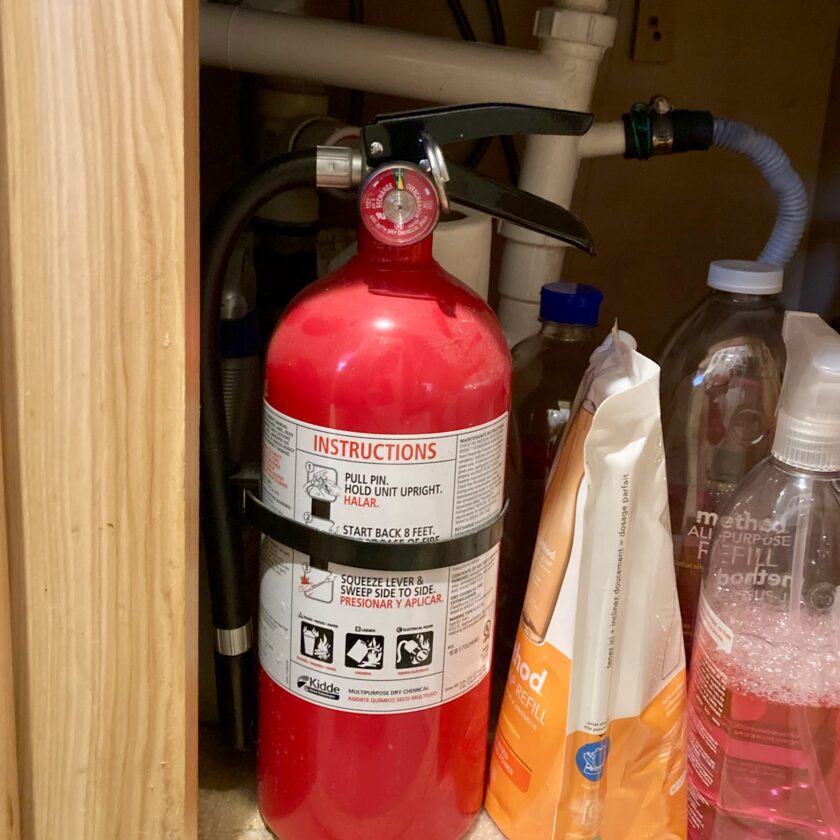
You should also keep a fire extinguisher in each bedroom. These are primarily egress tools, allowing the occupant to create an exit for him- or herself. Finally, you should have a fire-extinguisher in high-hazard areas. Since we have lawn equipment, solvents, and other flammable stuff in the basement, we keep a fire extinguisher down there, too.
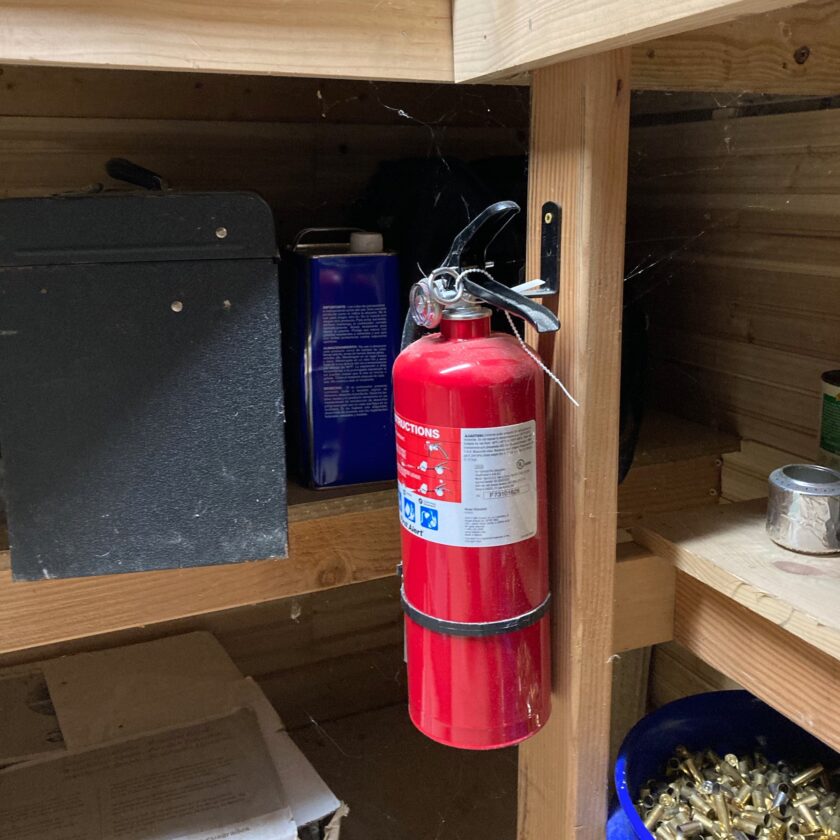
Fire Extinguisher Maintenance
Fire extinguishers don’t require a ton of maintenance, but they do require some. At the bare minimum I would recommend an inspection a couple of times per year. To make it easy, do it when you change your smoke detector batteries. When you inspect your fire extinguisher, check the gauge. It should be in the green, indicating it is full. Pick it up to make sure it feels appropriately heavy (even the NFPA recommends this). Next, inspect the moving parts for rust and/or corrosion. Inspect the hose for cracks or brittleness. Finally, give the body a good wipe-down. That should be about it.
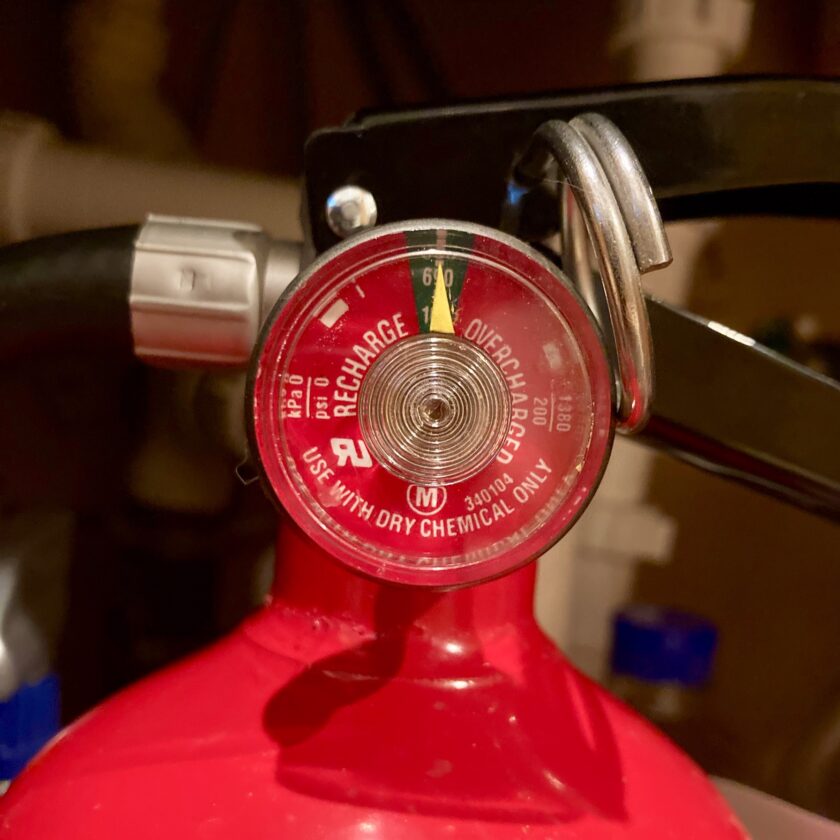
The NFPA recommends having fire extinguishers professionally inspected every six years (for dry chemical models). Personally, I’m happy to stick to this recommendation. After all, fire extinguishers are life-support equipment. Even though inspection and testing costs a few dollars it’s much cheaper than new fire extinguishers.
Egress
You should also have a solid egress plan and the means to implement it. Getting outside in the event of a fire is absolutely critical.
Make a Plan, Rehearse the Plan
A critical part of fire emergency preparedness is making a plan and rehearsing it. When I was in elementary school the local fire department taught annual safety classes. I still remember their acronym: EDITH, for Exit Drills In The Home. That’s pretty sound marketing…and really good advice.
Plan your exits now. Develop a primary and alternate exit for each room in the house. Learn what obstacles (locked doors, for instance) are required for using each exit. Make sure each and every member of your family is aware of the plan. Then rehearse. Rehearsing the plan will reveal any problems with it (i.e. kid not tall enough to reach window). Practice the plan on a regular basis, especially with smaller children. Your life and theirs may very well depend on it.
Hardware Issues
Fire is dark. Finding your way around in a fire may very well require a flashlight. I would recommend against a weapon-mounted light, and in favor of a standalone, handheld light. In the middle of a house fire you don’t want to increase the danger by having to use a flashlight attached to a firearm. Keep a standalone, handheld flashlight immediately accessible in every bedroom.
There are some hardware issues you should take into account. Ensure that your windows will actually open. In some cases old windows seize up and won’t open – at least not without a ton of effort. Find that out and deal with it NOW. Windows may require quite a bit of TLC to become operable again, but this is time well spent.
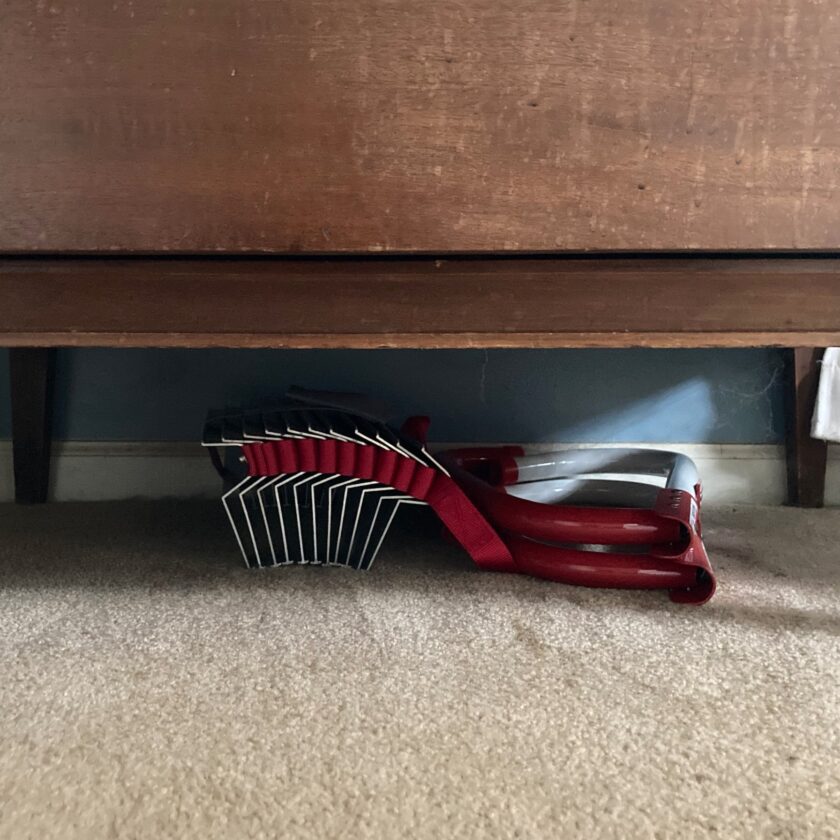
Likewise, if your bedrooms are on second-floor windows you need to invest in emergency escape ladders for each bedroom. One ladder in mom and dad’s room isn’t enough. If flames, smoke, or super-heated air are in the hallway, each bedroom occupant will need to extricate him- or herself.
Closing Thoughts
Home fire emergency preparedness isn’t all that difficult. It’s also not that expensive, in comparison to the thousands most of us have no problem dropping on guns and related gear. For all the stuff you see here I have invested maybe $350. That’s less than the cost of all but the crappiest of compact pistols. It’s less than a mid-range red dot optic. Right now it’s $100 less than a case of 9mm ammo. It sounds expensive…but is it really that expensive? I say not, in comparison to the threat.
If you’re not thinking about fire emergency preparedness, now is the time to start. Regardless of where and how you live – trailer or mansion, camper or ranch house, cob cottage or manufactured home, rent or own – you need to plan do deal with a fire.
